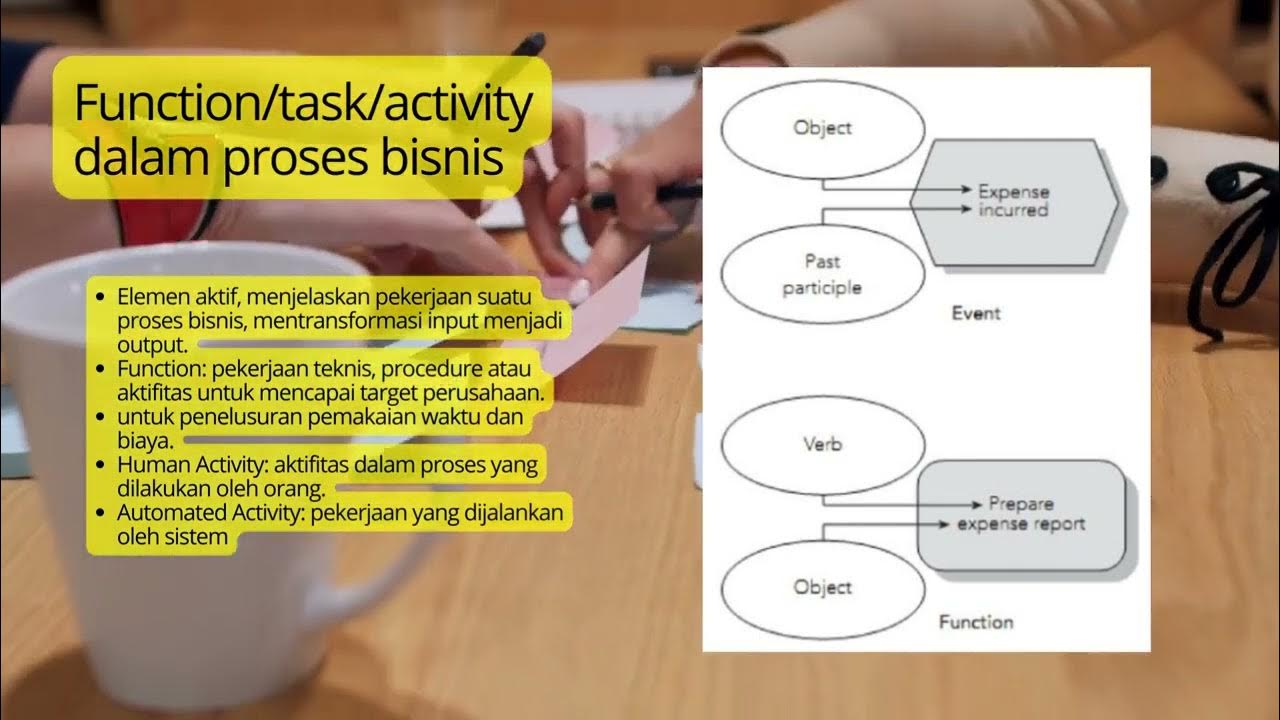MPB 10_2 Process Implementation Executable Models
Summary
TLDRThis video script explores advanced methods for modeling business processes, focusing on BPMN (Business Process Model and Notation), CMN (Case Management Notation), and DMN (Decision Model and Notation). It covers strategies for balancing model granularity, decomposing high-level processes, and specifying execution details for automation in BPMS. The script also highlights how CMN helps with non-sequential tasks and how DMN facilitates clear decision-making through decision tables. Key methods for converting conceptual models into executable ones are also discussed, emphasizing the importance of automation boundaries, task refinement, and execution property specification.
Takeaways
- 😀 Process models vary in granularity, with conceptual models being abstract and requiring detailed specifications at the implementation level.
- 😀 CMN (Case Management Notation) is ideal for processes with unordered tasks or uncertain sequences, focusing on what needs to be achieved rather than how.
- 😀 BPMN (Business Process Model and Notation) is often used for modeling structured workflows, but CMN can be integrated within BPMN models for more flexibility.
- 😀 Execution properties must be clearly defined in BPM models, such as data structures, variables, services, and task assignments, to ensure successful implementation.
- 😀 DMN (Decision Model and Notation) provides a method to define business rules and decision-making logic within process models, enhancing automation and consistency.
- 😀 Decision tables in DMN are used to define how inputs (like income or loan amount) map to outputs (such as loan grades), based on predefined business rules.
- 😀 BPMN execution properties include defining how messages, signals, and errors are handled, as well as detailing task-specific code and service calls.
- 😀 Three BPMS categories were discussed: pure BPMN systems, adapted BPMN tools, and non-BPMN systems that use their own languages for process modeling.
- 😀 The process model execution method involves identifying automation boundaries, reviewing manual tasks, completing the model, detailing the process, and specifying execution properties.
- 😀 BPMS tools like Bizagi and Camunda support BPMN, while others, like YetNo, use non-BPMN languages, offering different levels of process management flexibility.
- 😀 A challenge in process modeling is determining the exact order of tasks, and CMN helps manage processes that do not follow a predictable sequence.
Q & A
What is the main challenge when transitioning from conceptual to executable process models?
-The main challenge is to specify the appropriate level of detail in the process model. Conceptual models tend to be more abstract, and the goal is to decompose them into more detailed sub-processes that can be implemented effectively.
Why might some process models be too detailed for BPM systems?
-In some cases, process models may specify tasks that are too granular, such as separate checks that can be combined into a single operation in an automated system. This level of detail can overwhelm BPM systems, which prefer more abstract models.
What is the role of BPM in coordinating task assignments?
-BPM systems add value by coordinating the handoff of tasks between resources, ensuring that work is effectively distributed across participants in a process.
What types of tasks are not suitable for automation in BPM systems?
-Tasks that lack a predictable order of execution, often performed in an ad-hoc manner, are unsuitable for BPM systems. These tasks are better handled by case management systems, which provide more flexibility.
What is CMN, and how does it relate to BPMN?
-CMN (Case Management Notation) is a notation used to specify processes where the sequence of steps is not clearly defined. It can be used alongside BPMN to handle tasks that require more flexible, non-linear execution.
What are the key components of Decision Model and Notation (DMN)?
-DMN includes three main components: Decision Requirements Graph (DRG), Simple Expression Language (S.FIL), and Decision Tables. These elements help specify business rules and decision-making processes in a model.
How do decision tables in DMN function?
-Decision tables define the relationship between inputs and outputs, helping to identify how specific values, such as annual income or loan amount, correspond to outcomes, such as a loan grade. The tables are used to automate decision-making based on predefined rules.
What are the three categories of BPM systems in relation to BPMN support?
-The three categories are: 1) Pure BPMN systems, which natively support BPMN; 2) BPMN-adapted systems, which use BPMN interfaces but rely on internal representations for execution; and 3) Non-BPMN systems, which use their own languages and do not support BPMN.
What are the five steps in converting a conceptual process model to an executable model?
-The five steps are: 1) Identify the boundaries of automation, 2) Review manual tasks, 3) Complete the process model, 4) Decompose the process into the right level of detail, and 5) Define execution properties for the chosen BPM system.
What is the purpose of specifying execution properties in a BPM model?
-Specifying execution properties ensures that each element of the process model is implemented effectively by the chosen BPM system, defining variables, data structures, messages, signal types, and other relevant details for seamless execution.
Outlines

Cette section est réservée aux utilisateurs payants. Améliorez votre compte pour accéder à cette section.
Améliorer maintenantMindmap

Cette section est réservée aux utilisateurs payants. Améliorez votre compte pour accéder à cette section.
Améliorer maintenantKeywords

Cette section est réservée aux utilisateurs payants. Améliorez votre compte pour accéder à cette section.
Améliorer maintenantHighlights

Cette section est réservée aux utilisateurs payants. Améliorez votre compte pour accéder à cette section.
Améliorer maintenantTranscripts

Cette section est réservée aux utilisateurs payants. Améliorez votre compte pour accéder à cette section.
Améliorer maintenantVoir Plus de Vidéos Connexes

Introduction to BPMN

What Kind of Organizational Assets are Business Processes?

RPL 1 1 Proses Bisnis Pengembangan Perangkat Lunak dan Gim

[FR] Introduction au BPM (Business Process Management) et au BPMN (Business Process Model Notation)

BPMN Basics

Business Process Modeling (BPM): Definisi, Manfaat dan Teknik
5.0 / 5 (0 votes)
